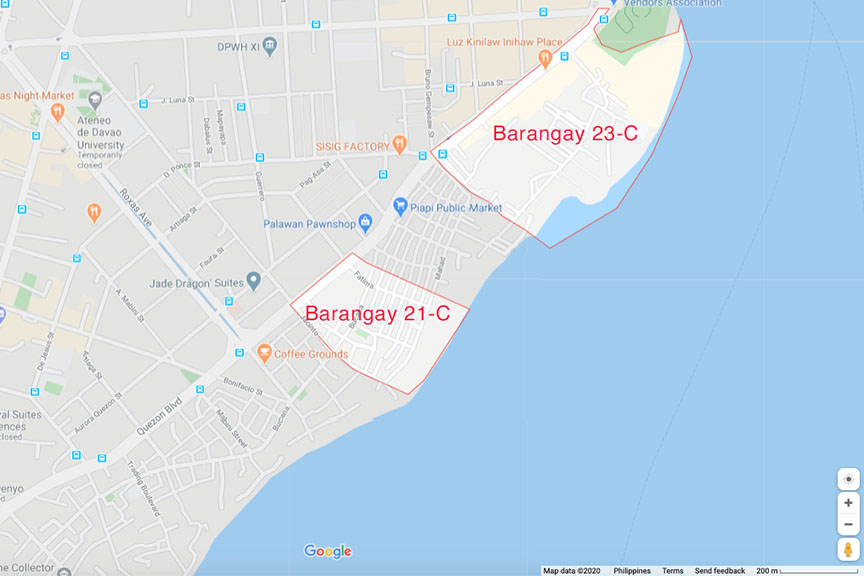


The city of Davao became part of Davao del Sur no longer the provincial capital, it became a commercial center of southern Mindanao. In 1967, the Province of Davao was divided into three provinces: Davao del Norte, Davao Oriental and Davao del Sur. The Battle of Davao towards the end of World War II was one of longest and bloodiest battles during the Philippine Liberation, and brought tremendous destruction to the city, setting back the economic and physical strides made before the Japanese occupation. The city was subjected to extensive bombing by forces led by Douglas MacArthur before American forces landed in Leyte in October 1944. Davao was among the earliest to be occupied by Japanese forces, and the city was immediately fortified as a bastion of Japanese defense. On December 8, 1941, Japanese planes bombed the harbor and from Decemlanded forces and began an occupation of the city which lasted to 1945. It was one of the first two towns in Mindanao to be converted into a city (the other was Zamboanga). The City of Davao became provincial capital of a united Davao Province. The bill called for the appointment of local officials by the president.ĭavao was inaugurated as a charter city on Octoby President Manuel L. The development of large-scale plantations faced a labor shortage, and workers were contracted from Luzon and the Visayas (including Japanese laborers from the Baguio, Benguet road construction).īecause of increasing Japanese influence in the region's economy, on March 16, 1936, congressman Romualdo Quimpo from Davao filed Bill 609 (passed as Commonwealth Act 51), creating the City of Davao from the Town of Davao (Mayo) and Guianga District. These groups generally refer to themselves today as Kalagans. Saturnino Urios, who labored among the Moros of Hijo in 1892, divided the population those who wanted to live among the Christians left Hijo, and were resettled in Tigatto, Mawab and Agdao under the supervision of Francisco Bangoy and Teodoro Palma Gil. Davao was then ruled by a chieftain, Bago, who had a settlement on the banks of the Davao River (then called the Tagloc River by the Bagobos).Īfter Cruz de Oyanguren defeated Bago, he renamed the region Nueva Guipúzcoa, founding the town of Nueva Vergara (the future Davao) on 29 June 1848 to honor of his home in Spain and becoming its first governor. Official colonization of the area, however, began in 1848 when an expedition of 70 men and women led by José Cruz de Oyanguren of Vergara, Spain, established a Christian settlement in an area of mangrove swamps which is now Bolton Riverside. Pearl farm in davao city more fun in the philippines 2014.Choose philippinesdavao city i curlytops i.This figure also makes it the third-most-populous city in the Philippines and the most populous in Mindanao. The city has a total land area of 2,443.61 km 2 (943.48 sq mi), and a population of 1,632,991 people based on the 2015 census. It is geographically situated in the province of Davao del Sur and grouped under the province by the Philippine Statistics Authority but being a highly urbanized city, it is governed and administered politically independent from it. Davao City ( Cebuano: Dakbayan sa Dabaw, Filipino: Lungsod ng Dabaw) is a city in Mindanao island, the largest city in the Philippines in terms of land area, and the most populous city in the country outside of Metro Manila.


 0 kommentar(er)
0 kommentar(er)
